The Dwarf Pawpaw (Asimina parviflora) has a wide but scattered distribution throughout the dry, oak-hickory forests of the Falls Lake State Recreation Area, in the central Piedmont of North Carolina. At the B. W. Wells S.R.A., a small cluster of Dwarf Pawpaws is located in a wooded area within sight of the Wells’ home at Rockcliff Farm. Some of the largest numbers occur at the Shinleaf S.R.A., where they can be found as small clusters or as widely scattered individual shrubs in the group camping area and along roadsides. They often go unrecognized because they blend in perfectly with small groups of tree saplings that dot the forest floor. In fact, they are one of the most commonly overlooked or misidentified small shrubs in the Piedmont.
Most plants are only a foot or two high, but some can reach four feet or more. Below is a typical, small plant . The leaves are alternate and the leaf shape is obovate with variably acuminate tips. Obovate means roughly egg-shaped, with the narrower end toward the stalk. Acuminate means that the leaf tip tapers to a narrow point, sometimes with a twist at the tip.
Next is a slightly larger plant with downcast leaves, a common appearance.
In the fall, the leaves turn a bright yellow, which makes it much easier to locate against the flora of the forest. This shrub is about 3 1/2 feet tall.
Dwarf Pawpaws are very poor fruit producing plants, but when the fruits (technically berries) are present and mature, they stand out nicely. Their unique appearance quickly identifies the shrub as a pawpaw.
Dwarf Pawpaws are members of the Custard Apple family, the Annonaceae, which are mostly tropical in distribution. They and their larger relative the Common Pawpaw (Asimina triloba) are some of the few species in the family to be found in temperate regions. The edible fruit is soft and yellow, reminiscent of the texture and color of custard. The fruit of the Dwarf Pawpaw is similar to that of the Common Pawpaw, except, of course, much smaller.
The seeds are pictured below against a sheet of ruled notebook paper. The seeds may take two years to germinate. The young plants grow very slowy, developing an enormously long tap root before putting energy into the growth of the upper plant structure.
Another common name for the Dwarf Pawpaw is Smallflower Pawpaw. As the name implies, the flowers are very small and are seen even less often than the fruit. The flowers are said to have an obnoxious odor and are visited by flies. The flowers are green as they first open and then gradually turn dark purple to maroon.
While the presence of fruit or flowers on a Dwarf Pawpaw aids greatly in identification, they are not present in the vast majority of plants seen in North Carolina. Part 2 will focus on leaf shape and the small saplings that resemble pawpaws on the forest floor.
Herb Amyx

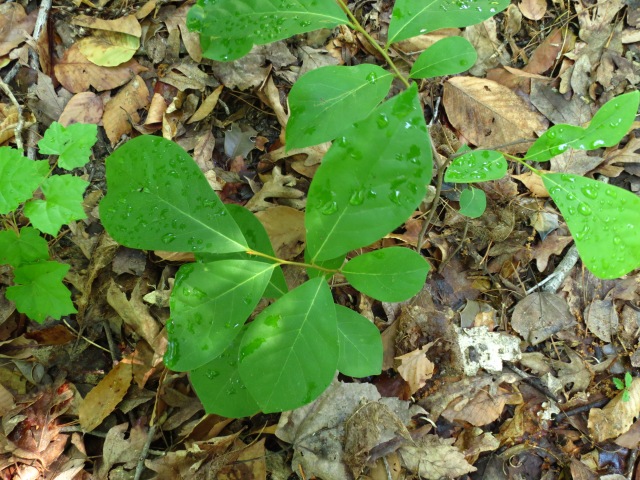
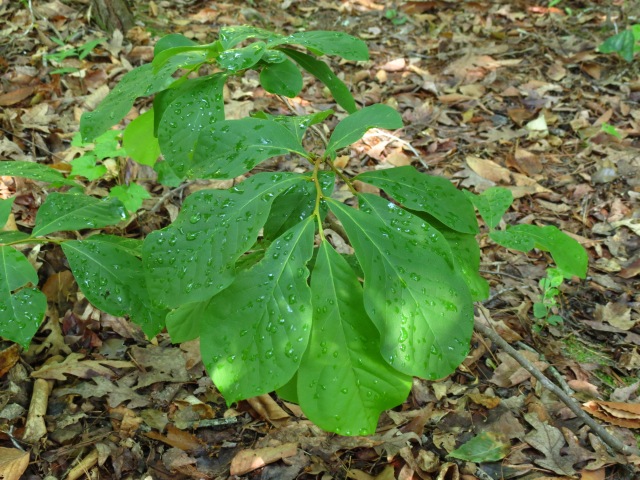
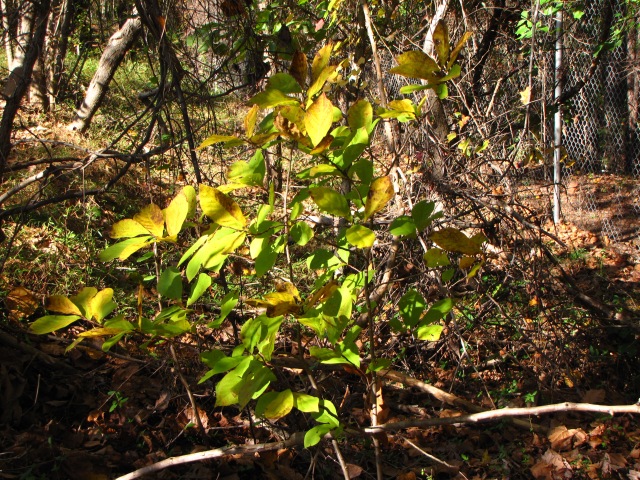
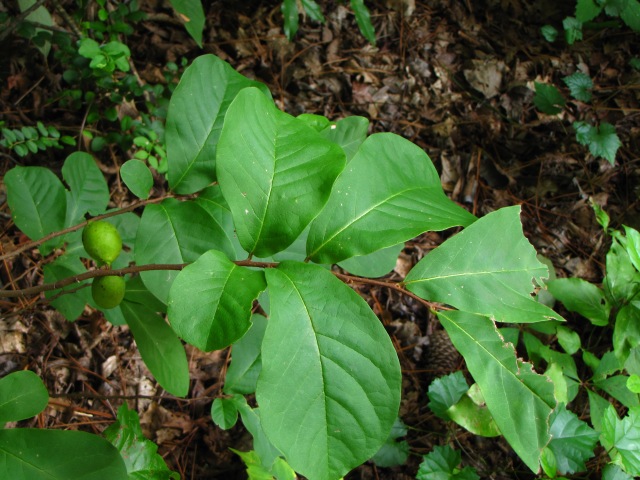
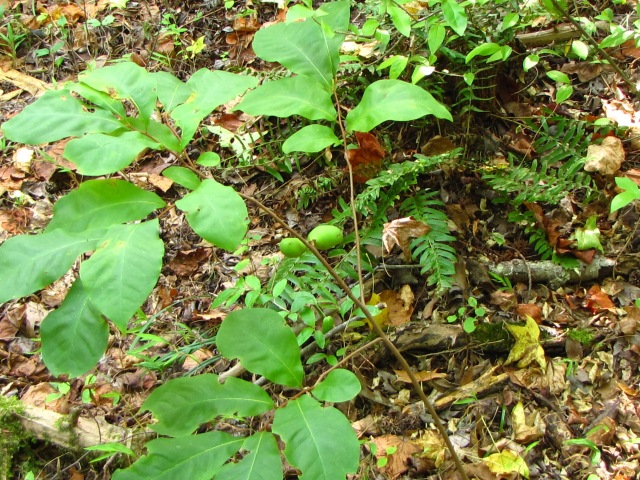
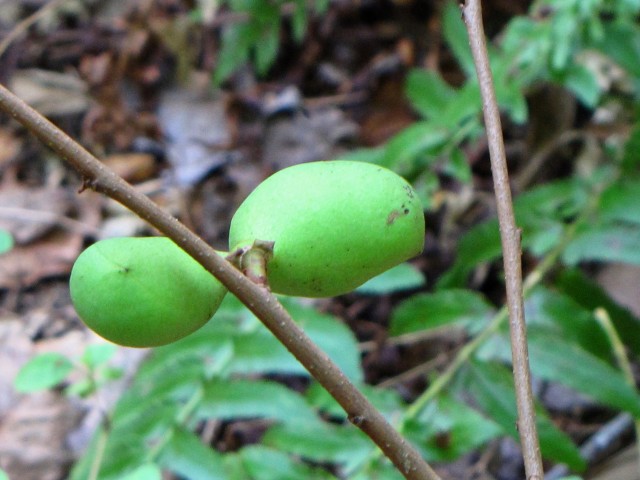

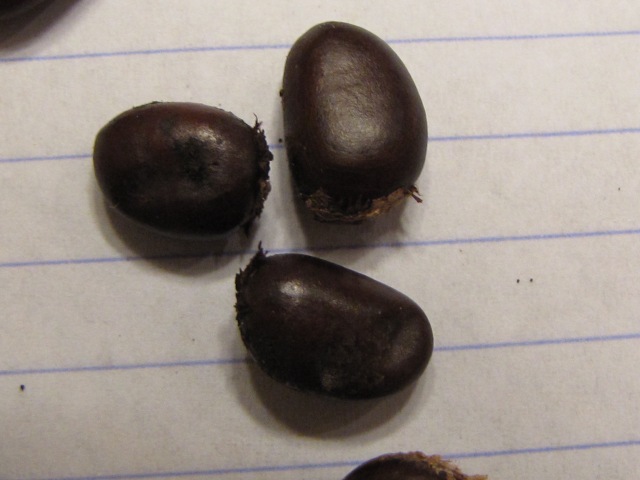
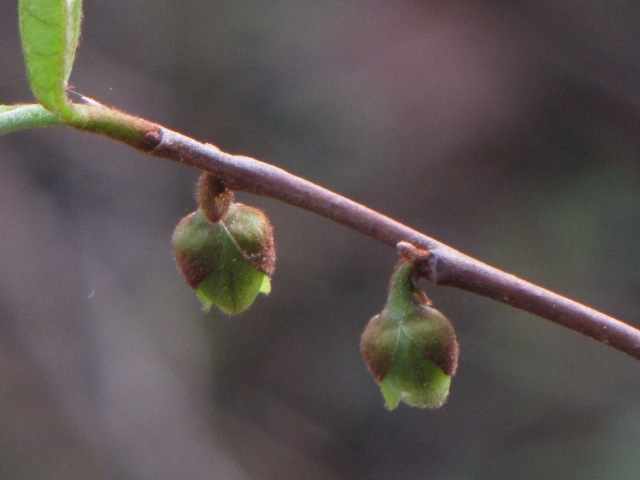
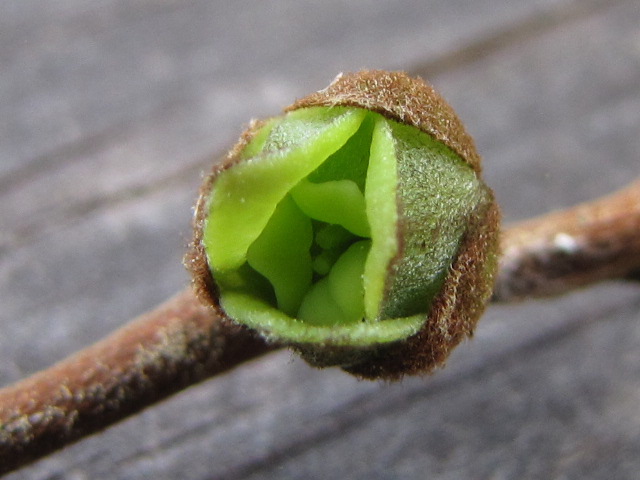
Herb, I recently participated in a Road Scholar program, Hiking the Appalachian Trail in Four States (PA, MD, WVA, and VA), and we saw paw paws everywhere on some sections of the trail. Several in our group were from Iowa and Illinois, and they all recognized the paw-paw. I did not, but I will now! (FYI: I saw no fruit on any of the saplings and wondered if there just wasn’t enough sun to product a flower or fruit).
Thanks for sharing. Helen Holt
On Sat, Jun 21, 2014 at 9:07 PM, News from Rockcliff Farm wrote:
> B. W. Wells Association posted: “The Dwarf Pawpaw (Asimina > parviflora) has a wide but scattered distribution throughout the dry, > oak-hickory forests of the Falls Lake State Recreation Area, in the central > Piedmont of North Carolina. At the B. W. Wells S.R.A., a small cluster of > Dwarf Pa”
i have small flowered paw paw in the woods behind my house. i wonder if the larger triloba will grow here as I understand the fruit is delicious. I live just west of Orlando, FL.
Asimina triloba, the larger Pawpaw, is not native to your area of Florida; it is confined to the panhandle and is not common even there. It also generally likes more moisture than Asimina parviflora. Nevertheless, it most likely will grow fine in your woods if you are able to give it some water during dry spells, especially while it is getting established.